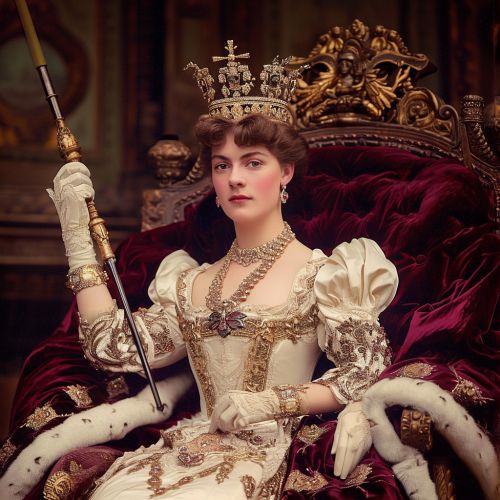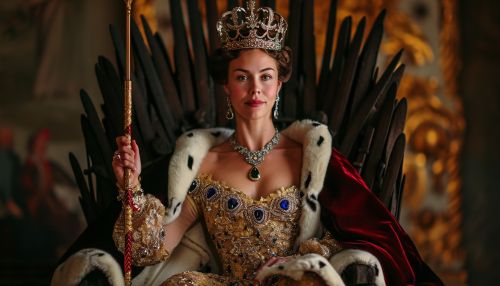Queen
Monarchy
A queen is a female ruler of a state, who may inherit the position by right of birth, or may be elected or appointed to rule. Queens are typically the wife or widow of a king. In some cases, a queen may rule in her own right, without a king. This is known as a queen regnant. The role and power of a queen can vary greatly, depending on the culture and the specific circumstances of her reign.
Historical Overview
Queens have been present in many different cultures and periods throughout history. The concept of a queen, as a female ruler or as the wife of a king, is found in ancient cultures such as Egypt, where Cleopatra was the last in a succession of queens, and in the Roman Empire, where empresses often wielded significant power.


In the Middle Ages, queens often held significant power and influence. Queens such as Eleanor of Aquitaine and Isabella I of Castile were known for their political acumen and leadership. In some cases, queens regnant, such as Mary I of England and Elizabeth I of England, ruled in their own right.
In modern times, the role of a queen can vary greatly. Some queens, such as Queen Elizabeth II of the United Kingdom, serve as heads of state in constitutional monarchies, where their powers are largely ceremonial. Other queens may serve as the actual rulers of their countries, such as Queen Margrethe II of Denmark.
Roles and Responsibilities
The roles and responsibilities of a queen can vary greatly, depending on the culture and the specific circumstances of her reign. In some cases, a queen may serve primarily as a figurehead, with little actual power. In other cases, a queen may be the actual ruler of her country, with significant political power and responsibilities.
In a constitutional monarchy, the queen's role is largely ceremonial. She may open and close sessions of parliament, give royal assent to legislation, and perform other ceremonial duties. However, the actual governing of the country is typically done by elected officials.
In an absolute monarchy, the queen may have significant power. She may make laws, levy taxes, and make decisions about foreign policy. In some cases, the queen may also have religious duties, serving as the head of the state religion.
Queen Regnant
A queen regnant is a queen who rules in her own right, as opposed to a queen consort, who is the wife of a reigning king. A queen regnant has all the powers and responsibilities of a king, and her husband is typically known as a prince consort.
The number of queens regnant in history is relatively small, due to the prevalence of male primogeniture, which gives preference to male heirs. However, there have been notable exceptions. For example, Queen Elizabeth I of England, Queen Victoria of the United Kingdom, and Queen Margrethe II of Denmark have all been queens regnant.
Queen Consort
A queen consort is the wife of a reigning king. She may have a variety of roles and responsibilities, depending on the customs of her country. In some cases, a queen consort may have significant political power. In other cases, her role may be primarily ceremonial.
The title of queen consort is typically conferred upon marriage to the king. In some cases, a queen consort may become a queen regnant if her husband dies and there are no male heirs. This was the case with Queen Mary I of England, who became queen after the death of her half-brother, Edward VI.
Queen Dowager
A queen dowager is the widow of a king. She may retain the title of queen, but typically does not have any political power. In some cases, a queen dowager may serve as regent if the heir to the throne is too young to rule.
Queen Mother
A queen mother is a queen dowager who is the mother of the reigning monarch. The term is often used in the United Kingdom, where Queen Elizabeth The Queen Mother held this title.
